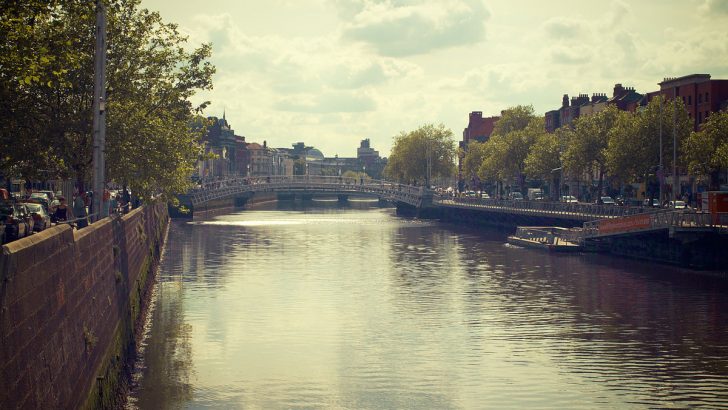The River Liffey: History and Heritage
by Christopher Moriarty (Collins Press, €21.99)
Dubliners seem to take the Liffey much for granted. It has been flowing, Christopher Moriarty tell us in this very detailed account of the river and its course, for some ten millennia.
It seems to have failed only once. In 1452, the old annals record, the Liffey was entirely dry for a distance of two miles. (This must have been a time of strange events, as the next year the archbishop of Dublin was kidnapped by pirates.)
“Any river, great or small,” the author explains, “offers sufficient material of interest to fill many books. In a global context, the Liffey, at not much more than 100 km in length and less than 10,000 years old, is puny and infantile. But it is one of the rivers of a capital city, it has contributed in no small way to the development of a civilisation. Many people have written about aspects of the Liffey, none more distinguished than James Joyce, who uses it as an allegory of human life itself.”
Moriarty opens his book with an account of the river as it appears in early legend, medieval lore and modern literature, including Joyce’s Finnegans Wake.
The river rises in the mountains that hem in the city to the south, flows west and then east through the uplands, the lakelands of Blessington, and the open farming land of Kildare to flow down to Dublin city through its suburbs, its crowded centre and through the port and docks, out into the bay. He concludes with a long walk down to the South Wall from where he was able to look back at the mountains to the south whence flowed the waters at his feet.
Future
Here he tells that in winter the teal that feed along the Shelly Banks (that is to Dubliners – the Ordnance Survey thinks they are named after the poet), breed beside the Liffey head. The Liffey is a world where the beginning links determinedly with the end, or rather the future.
Moriarty is a naturalist and an expert in fish, so naturally enough in his book, nature and animal life play a large part. But as the river descends it becomes more and more tangled in human history. There is not an epoch which has not left its mark on the river.
The calm pastoral landscapes invoked in much of the book give way to his account of the startling changes that have overtaken the city-side river since the 1970s. His text is filled with maps and images of the past, but the cover – an aerial view of the port opening out into the bay – suggests that a different future is in the making.
The scenes here have been completely transformed since the author and I from different places first saw them as boys. Now the tumbling 18th Century houses and the public buildings of the 19th Century have given way to glass fronted high rises and new bridges that carry ever-denser traffic over the flowing water of the Liffey.
Reading this book, a delightful amalgam of human and natural history, by a writer with a fluent and entertaining style, the reader will be fascinated by the glimpses he gets of what was, and what is.
All too often we think of the Liffey side of Dublin as a Norse creation. The first Dubliners were much earlier. In 2005 during the preliminary archaeological work before the new buildings at Spencer Dock, Melanie McQuade recovered the remains of fish traps which were carbon dated to around 6000 BC – evidence of some of the earliest Liffey-siders. But what is coming may be just as extraordinary.
A plan now on display in the foyer of the City Council offices shows what is planned for the future. The futuristic scheme for the North Lotts and Grand Canal Dock envisages small sailing boats racing on the lower stretch of the river at the Conference Centre.
There was such a plan for the Thames back in the 1950s. That involved making the river non-tidal and never came about. Such a scheme would be easier to put in place in Dublin, so perhaps one for the Liffey will be undertaken, presaging an exciting and very different future for an ancient river.


 Peter Costello
Peter Costello